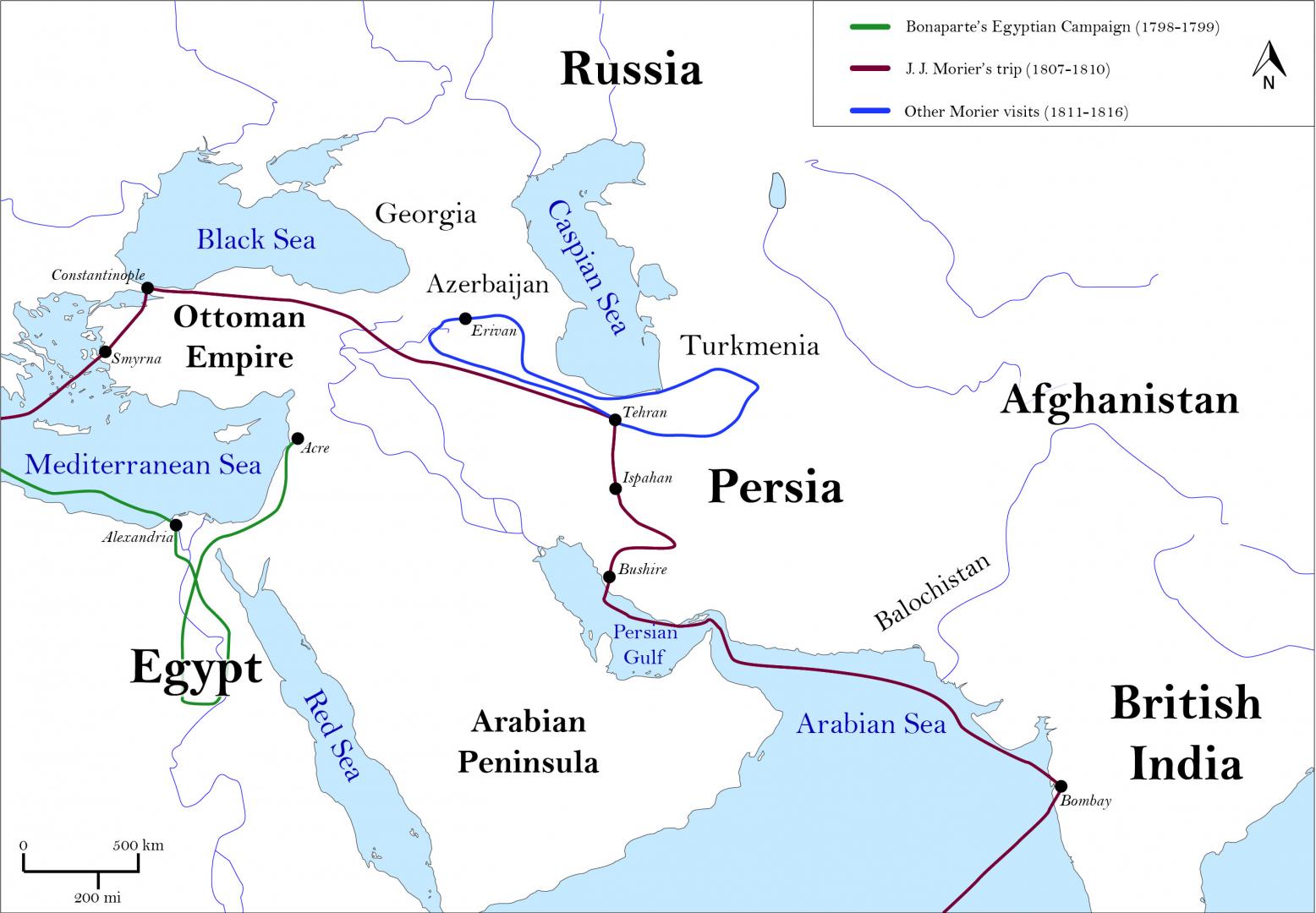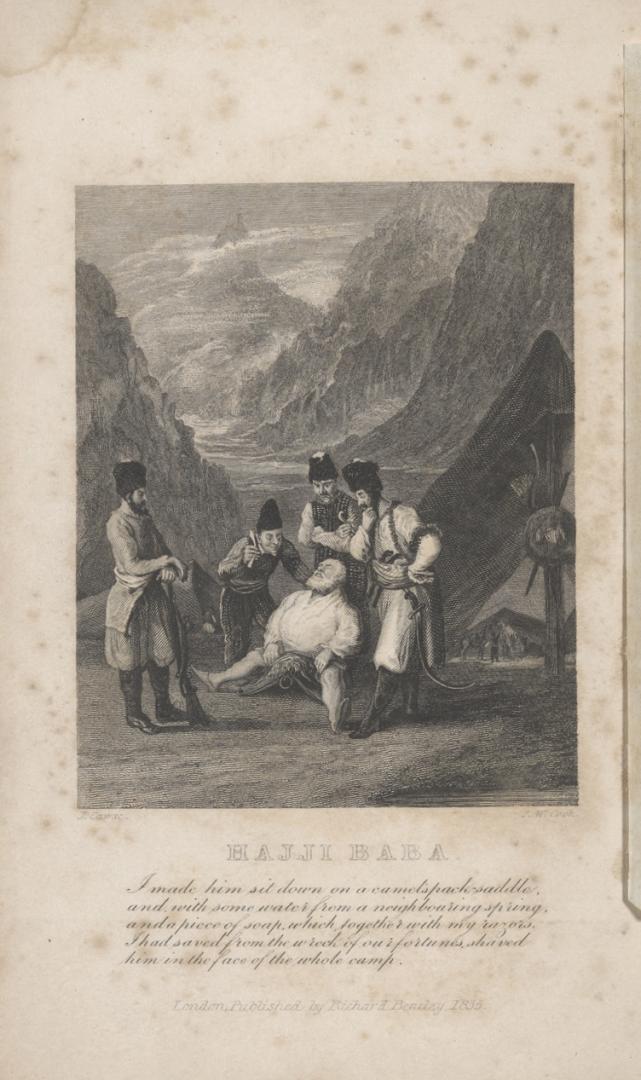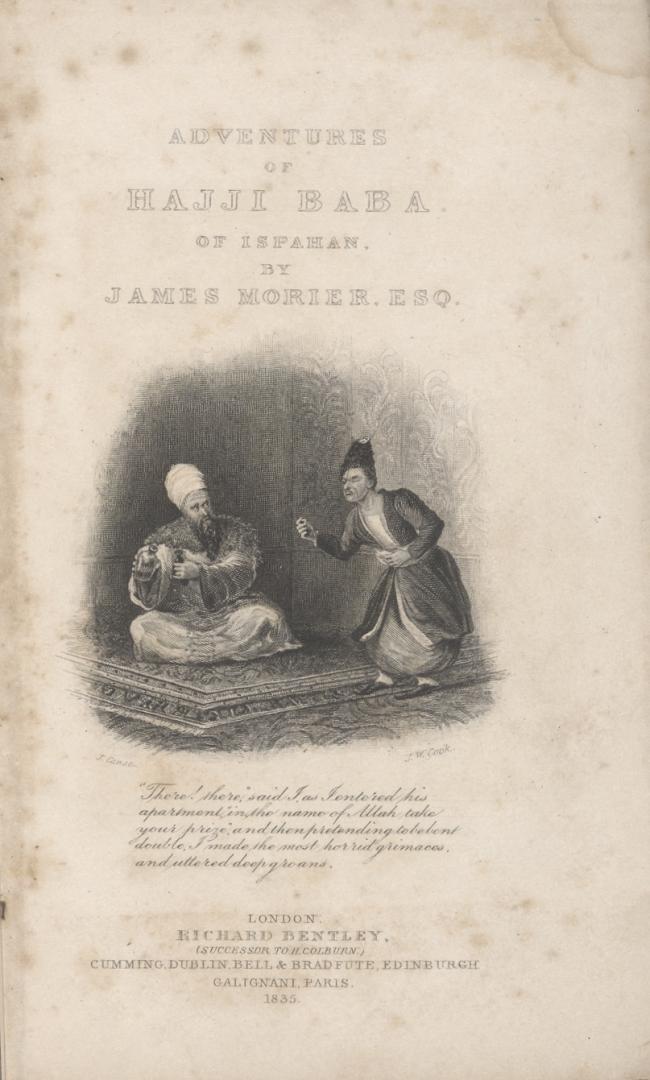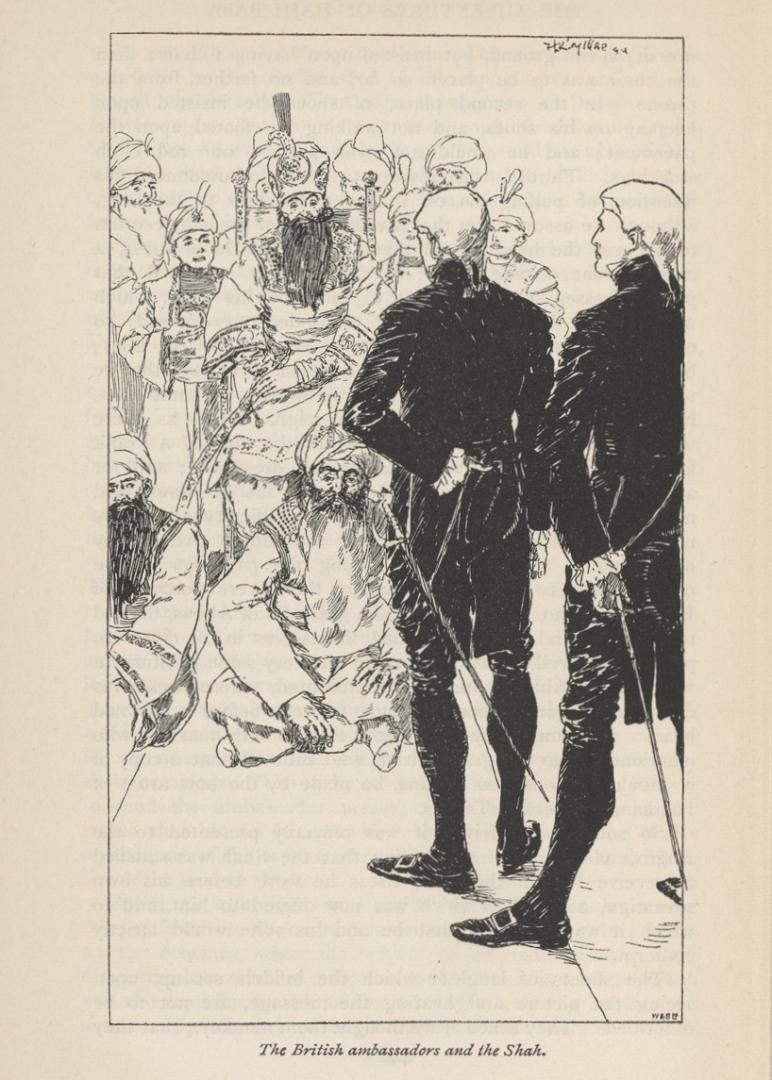Introduction
The British author James Justinian Morier (ca. 1780-1849), whose portrait from the Columbia University art collection is the centerpiece of this exhibition, is remembered today for his novel The Adventures of Hajji Baba of Ispahan, published in 1824. However, prior to his success as a fiction writer, Morier had a diplomatic career that took him twice to Persia, as he and his contemporaries referred to the country we now recognize as Iran. These trips prompted him to publish two illustrated travel books in 1812 and 1818. It was also around this time that the Columbia portrait was painted.
In the early 1800s, Persia entered a period of intense diplomatic relations with Britain and France, played out against the backdrop of the Napoleonic wars. From the British standpoint, an alliance with Persia became critical following Napoleon Bonaparte’s invasion of Egypt in 1798. For the Qajar ruler Fath ‘Ali Shah, on the other hand, the priority was to counter Russia. While the Treaty of Finkenstein (1807) sanctioned a Franco-Persian alliance, it was overturned when Napoleon signed the Treaty of Tilsit with Czar Alexander I. This reversal enabled Parliament, with the support of King George III, to orchestrate a British diplomatic comeback in Persia in which Morier was involved, helping to facilitate the signature of two treaties in Tehran (1809 and 1812), and accompanying the Persian envoy Mirza Abul Hasan to London in the intervening years to ratify the 1809 treaty.
Morier’s time in Persia was linked to a specific historical episode. However, the portrait, travelogues, and editions of Hajji Baba featured in this exhibition – following eighteenth-century Western Europeans’ desire to extend their gaze further East – should also be considered in light of the Orientalist discourse developed by the West to construct a culturally inferior East, thereby justifying Western imperial ambitions. In focusing on Morier and nineteenth-century Persia, this exhibition highlights the author’s multifaceted relationship to this land – an object of fantasy, scrutiny, and satire.
Portrayals of Persia
In his highly influential book Orientalism (1978), the literary critic, cultural historian, and Columbia professor Edward Said (1935-2003) critically analyzed the Orientalist discourse. The book’s postcolonial view offers a lens through which to reinterpret Western art and literature depicting “the Orient” – a loose term incorporating the Middle East – and as such, is relevant to Morier’s portrait and writings. At the same time, the objects on view in this case are unique portrayals of a specific moment in time, visually documenting Persia and its culture during the early decades of the Qajar dynasty (1794-1925) as Morier experienced them.
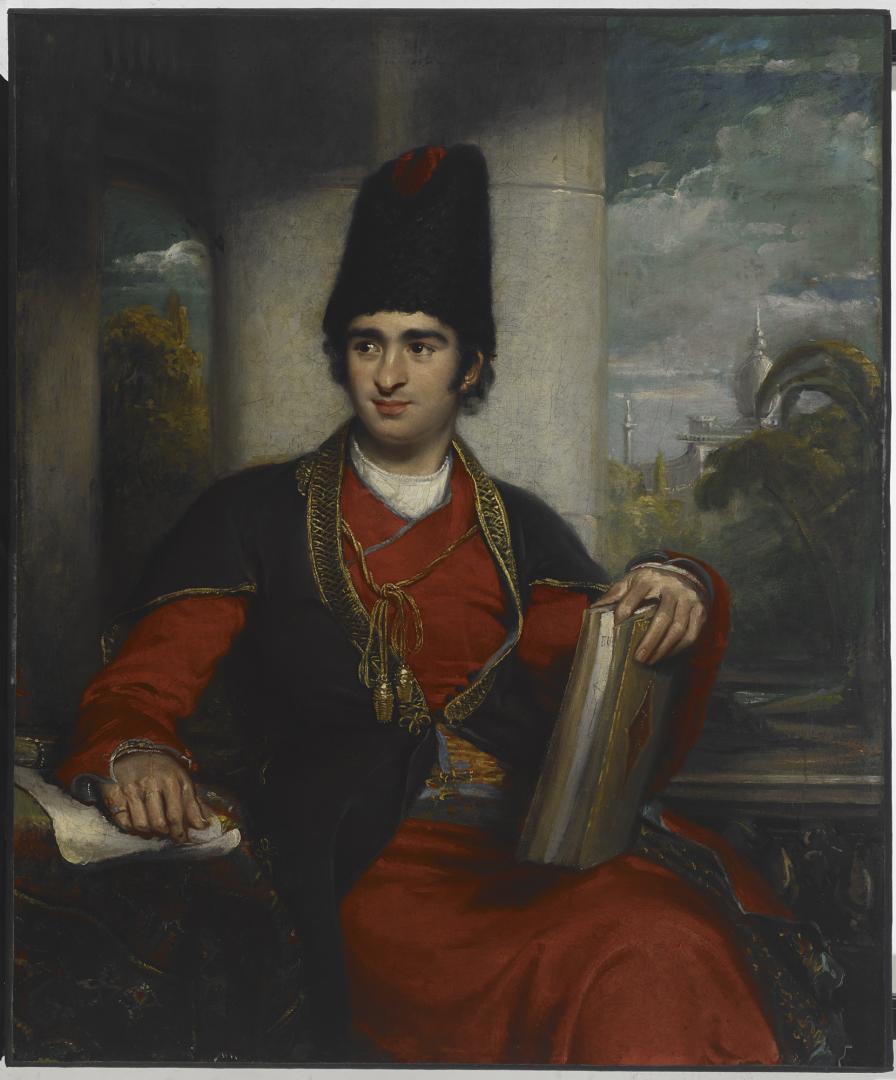
Morier’s portrait is attributed to the British artist George Henry Harlow (1787-1819). Although undated, it seems to have been painted in 1818, the same year Morier’s second travelogue was published. The portrait was acquired in 1928 by George A. Plimpton (1855-1936), a publisher and collector who amassed a group of over sixty portraits of British writers that were eventually donated to Columbia, along with his family papers, cultural artifacts, and books, all of which are today in the Rare Book and Manuscript Library.
The three-quarter-length portrait features Morier sitting in a casual pose, holding a large book and gazing serenely into the distance, as though he had been caught in a moment of contemplation while reviewing an important text. Significantly, Morier is portrayed wearing traditional Qajar Persian clothing, including a vivid red qaba (tunic) under a deep purple arkaloq or kordi (robe), embroidered with gold trim and tassels. He also wears the distinctive kolah, a Qajar hat made of dark astrakhan wool affixed to a board, typically reserved for upper-class Persian men. Morier’s overall costume is authentic; in fact, he owned such clothes, wearing them while traveling through Persia. In contrast, the imaginary domed building in the background may be seen as a stock Orientalist motif, yielding to fantasy rather than a specific reality.
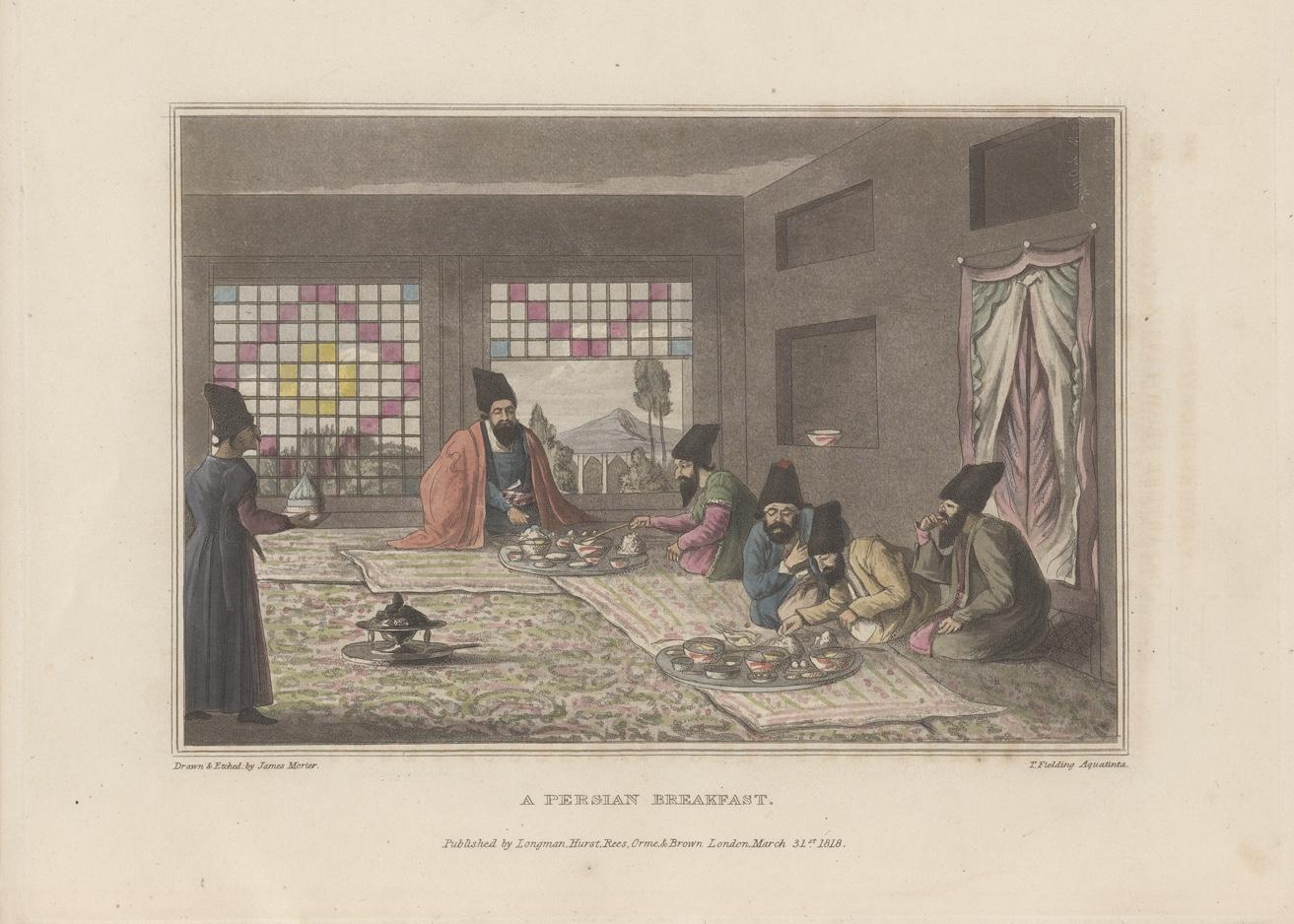
The plate entitled “A Persian Breakfast,” published in Morier’s 1818 travelogue – the copy displayed here was conserved by the Columbia University Libraries Conservation Program for this exhibition – shows men wearing the same kolah hats. The scene recounts an episode where Morier and his colleagues, traveling from Tabriz (today in Azerbaijan), were given breakfast by a local government official. Although the printmaker Theodore H. A. Fielding (1781-1851) was responsible for the hand-colored aquatint technique, Morier is credited with the design and etching. Indeed, the same scene appears in his sketchbook as an independent pen-and-ink drawing. This study is one of hundreds that Morier made – all of which attempt to capture the costumes, customs, and scenery around him during the years he lived in Persia – in a documentary spirit that contrasts with the Romantic image of the scholar reflecting on Persia conveyed in the painted portrait. All of his drawings are today deposited with the Morier family papers at Balliol College, University of Oxford.
Narratives of Persia
The books displayed in this case engage with Persia through two different genres – the travel book, and the novel. While these books were intended to stimulate the British reader’s imagination, they constructed distinctly different narratives of Persia.
Morier’s 1812 travelogue served a documentary purpose. Although filtered through the eyes of an Englishman, the wealth of information provided on geography, architecture, and the population, complemented by maps, copies of sculptural reliefs, and vistas of the landscape and monuments, sought to provide an objective and comprehensive account of Persia.
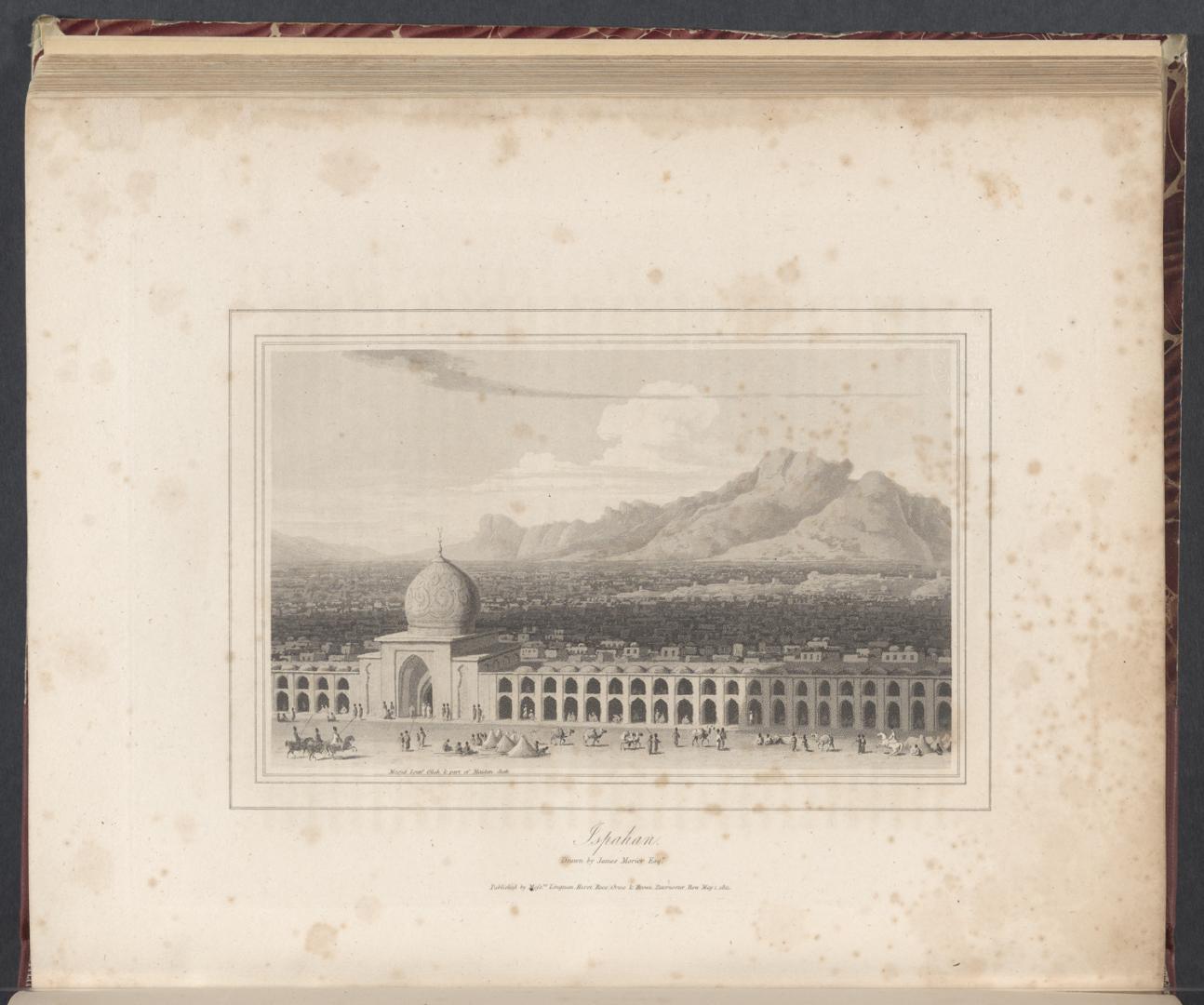
The distant and raised viewpoint adopted in illustrations such as “Ispahan” (Isfahan today), on view here, and “Sheraz” (Shiraz today), allows the viewer to examine the foreign land both from a removed and dominant position. Although the emphasis in “Ispahan” is on the mosque and nature, the composition is nevertheless animated by small figures in Persian clothing scattered around the Masjid-i Shaykh Luft Allah, adding to the exoticism of the scene. This contrasts with a print such as “Persian Musicians,” from the 1818 travelogue, where the facial features of the musicians are both generic and exaggerated.
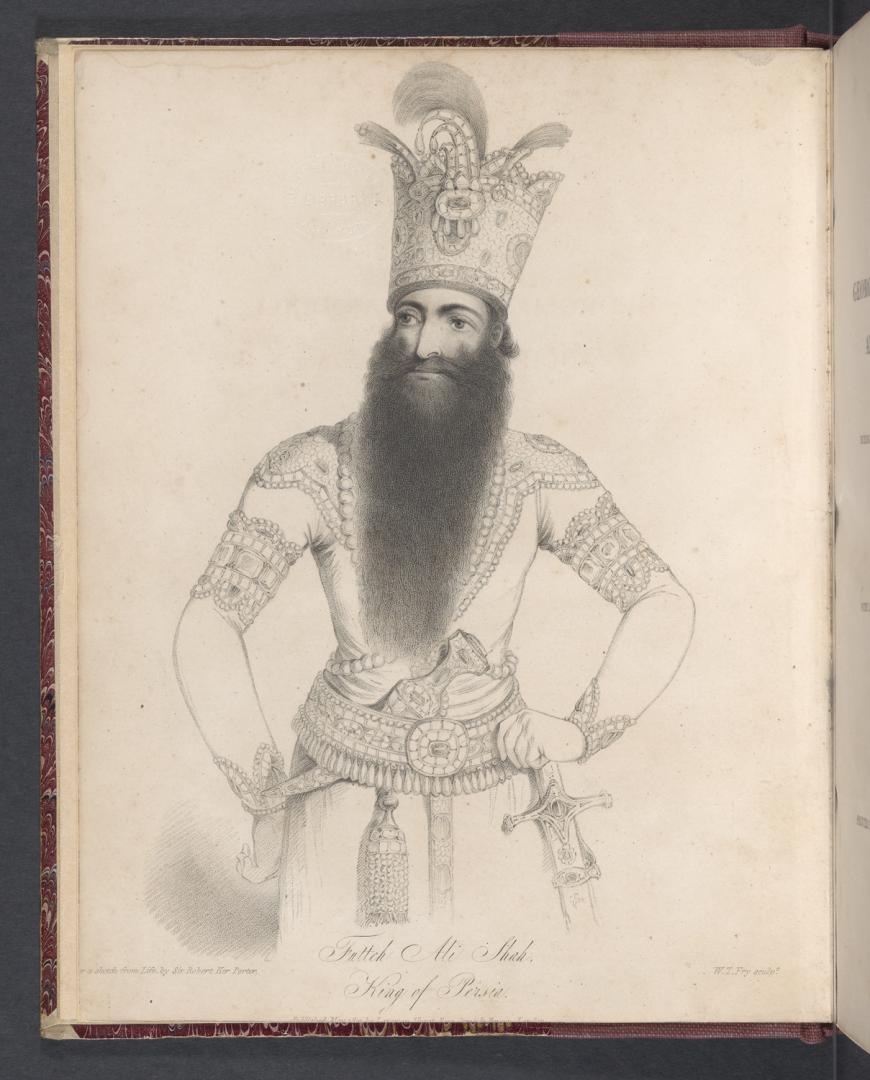
Travel books were popular publications in the nineteenth century, and following the success of Morier’s travelogues, Sir Robert Ker Porter (1777-1842) – also a diplomat, as well as a professional artist – published his own travel books on Persia in 1821. The impressive portrait of Fath ‘Ali Shah in court dress, after Porter’s drawing from life, serves as evidence of the author’s audience with the Persian ruler. Indeed, both Porter and Morier interacted with Persia’s highest officials.
The Adventures of Hajji Baba of Ispahan was originally published in 1824 as a three-volume set. Displayed on the upper shelf are later, illustrated editions, that attest to the novel’s popularity well into the twentieth century. A picaresque tale, Hajji Baba, allegedly based on the life of an existing character, was intended to entertain and arguably did so at the expense of the Persian people.
The 1835 edition on view was the first to be illustrated. The right image, showing Hajji Baba attempting to trick another character, signals the former’s roguish temperament, while the improbable shaving scene to its left exemplifies the amusing quality of the narrative.
In contrast, the illustration entitled “The British Ambassadors and the Shah,” in the 1895 edition on view, emphasizes the power relationship between the British and the Persians: the Shah and his entourage, relegated to the background and drawn in simple outlines, are visually conquered by their British counterparts.
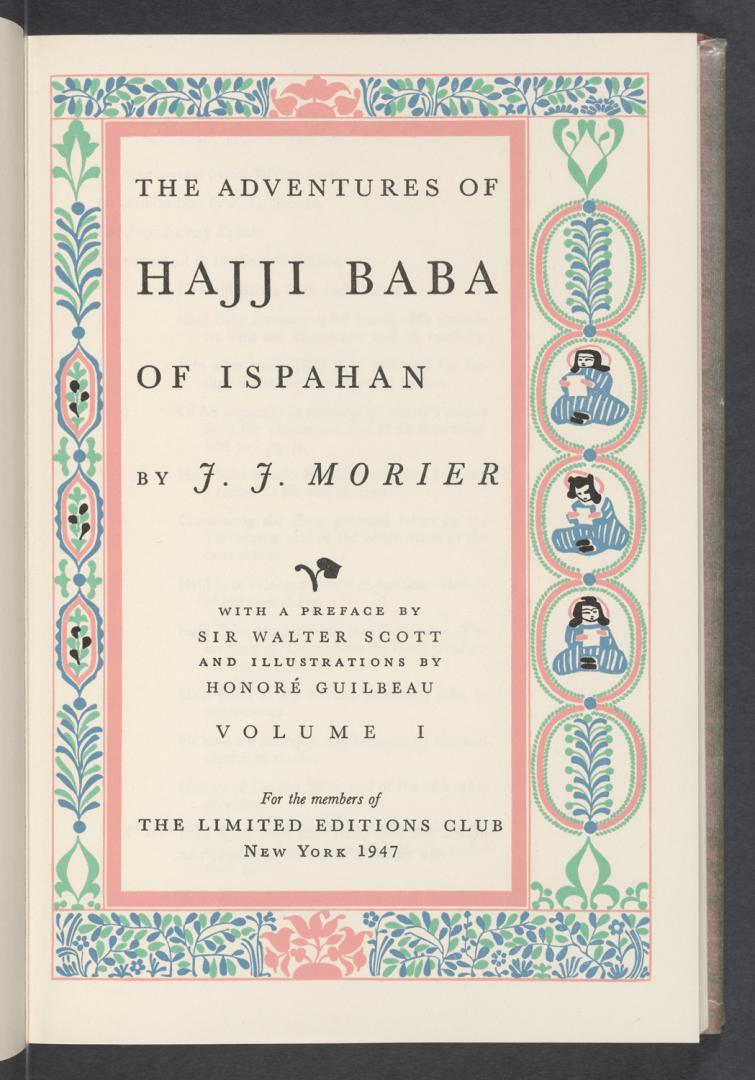
The refined 1947 edition on display, whose design strives to evoke Persia, attests to Morier’s continuing literary status.
Despite their obvious differences, Morier’s writings overlapped at the time of their release, in the sense that both the 1812 travelogue and Hajji Baba were considered at the time to be models of accuracy for their descriptions of Persia. Perhaps more importantly, our postcolonial perspective today allows us to recognize that Morier, while genuinely interested in Persia, wrote from a place of Western entitlement in his travelogue and novel, thus participating in the Orientalist movement.

